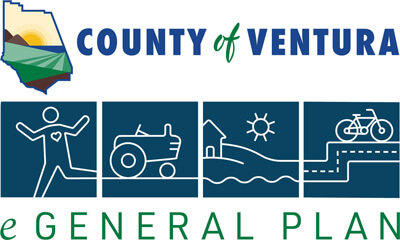The County shall require discretionary development in designated Existing Communities to construct roadways to urban standards and Complete Streets principles, including curb, gutter, sidewalks, and bike lanes when there is a nexus for improvement. The County shall rely on the guidelines and design standards for Complete Streets design established by the California MAnnual on Uniform Traffic Control Devices (CAMUTCD), Caltrans in the Highway Design MAnnual, and Complete Streets Guidelines (pursuant to Deputy Directive-64-R2), Federal Highway Administration, American Association of State Highway and Transportation Officials (AASHTO).
RDR
CTM-2.19 Safety Metrics
The County shall continue to examine and update safety metrics for California Environmental Quality Act (CEQA) impact analysis as appropriate. Options include but are not limited to: queue spill-back at intersections; mid-block unprotected crossings; and, increased crossing distances.
LU-22.3 Taking of Property Without Just Compensation
Notwithstanding any policy or provision of the General Plan, the Board of Supervisors, based on the advice of the County Counsel and upon making a finding that the application of a policy or provision of the General Plan will effect an unconstitutional taking of property without just compensation, may take any action or approve any project to the extent necessary to avoid such an unconstitutional taking. This provision does not apply to any General Plan amendment, including but not limited to any property land use re-designation, that is subject to the County of Ventura Save Open-Space and Agricultural Resources initiative measure – 2050 (Appendix C).
CTM-1.1 Vehicle Miles Traveled (VMT) Standards and CEQA Evaluation
The County shall require evaluation of County General Plan land use designation changes, zone changes, and discretionary development for their individual (i.e., project-specific) and cumulative transportation impacts based on Vehicle Miles Traveled (VMT) under the California Environmental Quality Act (CEQA) pursuant to the methodology and thresholds of significance criteria set forth in the County Initial Study Assessment Guidelines.
CTM-1.2 Projects with Significant Transportation Impacts
County General Plan land use designation changes, zone changes, and discretionary development that would cause an individual (i.e., project-specific) or cumulative significant transportation impact based on Vehicle Miles Traveled (VMT) under the California Environmental Quality Act (CEQA) shall be prohibited unless:
- There are no feasible mitigation measures available that would reduce the impact to a less than significant level; and
- The County’s decision-making body, after balancing, as applicable, the economic, legal, social, technological, or other benefits, including region-wide or statewide environmental benefits, of the project against its unavoidable transportation impact and any other environmental risks, determines that the benefits of the project outweigh the unavoidable adverse environmental impacts and adopt a statement of overriding considerations pursuant CEQA.
CTM-1.3 County Level of Service (LOS) Standards
The County shall maintain LOS standards for use as part of the County’s transportation planning including the traffic impact mitigation fee program, and the County’s review and consideration of proposed land use legislation and discretionary development. For purposes of County transportation planning and review and consideration of proposed land use legislation and discretionary development, the County shall use the following minimum acceptable Level of Service (LOS) for road segment and intersection design standards within the Regional Road Network and all other County-maintained roadways:
a. LOS-‘C’ for all Federal functional classification of Minor Collector (MNC) and Local roadways (L); and
b. LOS-‘D’ for all Federal functional classifications except MNC and L, and Federal and State highways in the unincorporated area, except as otherwise provided in subparagraph (c and d;
c. LOS-‘E’ for State Route 33 between the northerly end of the Ojai Freeway and the city of Ojai, Santa Rosa Road, Moorpark Road north of Santa Rosa Road, State Route 34 north of the city of Camarillo, and State Route 118 between Santa Clara Avenue and the city of Moorpark;
d. LOS ‘F’ for Wendy Drive between Borchard Drive to Lois Avenue; and
e. The LOS prescribed by the applicable city for all federal highways, state highways, city thoroughfares and city-maintained local roads located within that city, if the city has formally adopted and is implementing a General Plan policy, ordinance, or a reciprocal agreement with the County regarding development in the city that is intended to improve the LOS of County-maintained local roads and federal and state highways located within the unincorporated area of the county.
f. At any intersection between two or more roads, each of which has a prescribed minimum acceptable LOS, the lower LOS of the roads shall be the minimum acceptable LOS for that intersection.
